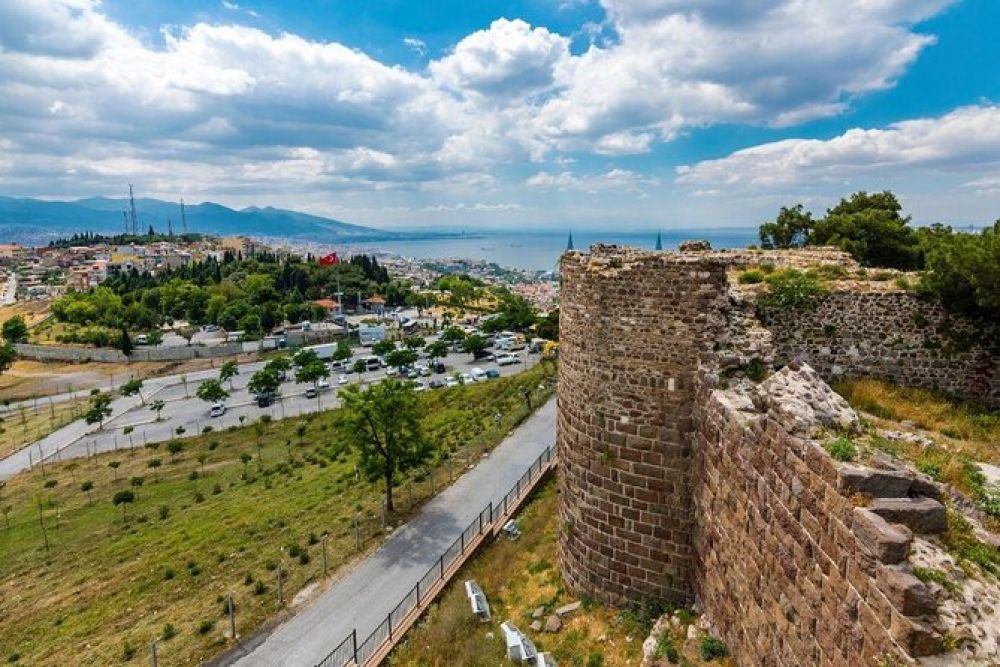

Perched atop the southern slopes of Mount Pagos, Kadifekale, which translates to "the velvet castle" in Turkish, stands as a testament to Izmir's ancient past. Its roots delve deep into the annals of history, with construction thought to be initiated during the reign of Lysimachus, a successor of Alexander the Great, around the 3rd century BC. Over centuries, this commanding fortress has witnessed the ebb and flow of numerous civilizations, from the Romans to the Byzantines, and later the Ottomans, who left their indelible marks on its storied walls.
The history of tourism in Kadifekale is relatively young when compared to its ancient chronicles. It wasn't until the 19th century that Izmir, formerly Smyrna, began to captivate the imagination of travelers and historians from across the world. The city's rich cultural tapestry, combined with the allure of its ancient ruins, including Kadifekale, started to draw in those in search of history and adventure.
In the 20th century, particularly following the establishment of the Republic of Turkey, attention towards conserving and showcasing Izmir's historical assets gained momentum. Kadifekale, with its panoramic views of Izmir and the Aegean Sea, began to feature prominently in travel itineraries. Efforts to excavate and preserve the site have enhanced its appeal, attracting history buffs, photographers, and casual tourists alike.
Today, Kadifekale occupies a special place in Izmir's tourism portfolio. The latest trends show an increased interest in authentic cultural experiences and sustainable tourism. Visitors to Kadifekale can delve into the past through guided tours, immersive historical narratives, and relaxed strolls among the timeworn ramparts and structures that still stand.
The local authorities have made strides in enhancing visitor facilities, including the creation of walking paths, information boards, and the provision of guides. Importantly, there is a growing emphasis on <.strong>preservation and education, ensuring that tourism does not come at the expense of the site's historical integrity.
Kadifekale also benefits from its proximity to other historical landmarks in Izmir, such as the Agora Open Air Museum and the ancient city of Ephesus, offering tourists a richer, multifaceted historical experience. Events such as open-air concerts and theatrical performances within the citadel have also grown in popularity, infusing the ancient stones with contemporary culture and bringing new life to the old bastion.
Looking to the future, prospects shine bright for Kadifekale as a hub of Izmir's tourism ecosystem. Plans for further archaeological excavations and the creation of more comprehensive visitor experiences promise to bolster its appeal. What's certain is that Kadifekale will continue to fascinate and charm visitors for generations to come, maintaining its status as a prized jewel in the crown of Izmir's cultural heritage.